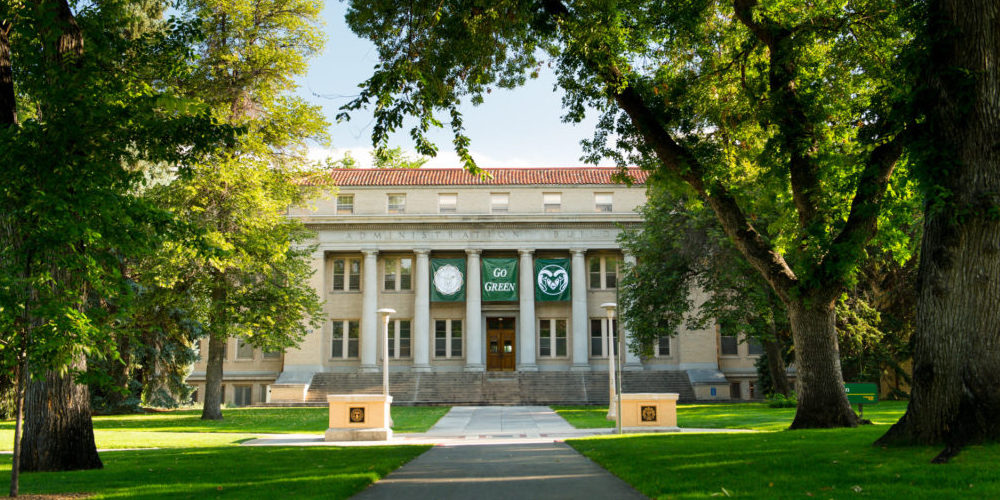
Colorado State University’s annual salary equity study to assess potential salary differences by gender or minority status for tenured and tenure-track faculty shows no statistically significant differences at any rank. The FY19 findings, released by the Office of Institutional Research, Planning and Effectiveness, mark the third year of single-year and change-over-time analyses using regression models developed by the Salary Equity Committee.
During late spring 2015, CSU President Dr. Tony Frank called for the creation of a committee of internal and external experts to analyze CSU’s faculty salary equity model to provide recommendations of effective practices that would strengthen the work conducted at the university. The Salary Equity Committee was appointed through nominations received from and reviewed with the leadership of the Standing Committee on the Status of Women Faculty (SCSWF), the President’s Commission on Women and Gender Equity (CWGE), and the Faculty Council (FC). The committee met from mid-fall 2015 through early spring 2017 when it issued a report explaining how the model was developed and recommendations for moving forward.
“One of the goals early on when the committee was formed was not just to identify gaps and close them, though that was paramount, but also for CSU to be a national leader around equity and inclusion among institutions of higher education,” said Provost and Executive Vice President Rick Miranda. “We owe a great debt to the committee and the many others who have been dedicated to erasing inequity at CSU.”
FY19 Salient Findings
FY19 single year analysis, key findings:
- No statistically significant between-group differences in salary were identified at any rank by gender or minority status.
FY15-FY19 change over time analysis, key findings:
- In FY15, FY16 and FY17, the salary gap for female Full Professors was statistically significant but has narrowed and is no longer statistically significant. In FY15, female Full Professors earned 92.2% of what their male colleagues earned; by FY19, this increased to 97%.
- Over the last five years, there were no statistically significant differences in salary by gender for Assistant or Associate Professors
- In FY16 and FY17, the salary gap for minority Associate Professors was statistically significant but has narrowed and is no longer statistically significant. In FY17, minority Associate Professors earned 94.6% of what their non-minority colleagues earned; by FY19, this increased to 98.6%.
- Over the last five years, there were no statistically significant differences in salary by minority status for Assistant or Full Professors
“These latest findings show that we are moving in the right direction and continue to make progress on previously significant differences,” said Laura Jensen, Vice Provost for Planning and Effectiveness. “But now it’s time to make sure the model originally developed by the committee remains the right fit. Between now and next fall, the methodology used for the FY17 through FY19 analysis will be reviewed to ensure it still reflects best practices and the best institutional data we have available.”
The full FY19 Salary Equity Study report and all prior reports are available at the IRPE website.
Salary analysis reflects larger commitment to change
Prior to the Salary Equity Committee’s formation, CSU had regularly conducted salary equity analyses and made adjustments accordingly. However, it was the voicing of concerns by senior female faculty to the administration that led CSU to reexamine its approach. Specifically, CSU Statistics Professor Mary Meyer’s research on salary equity in 2014 helped kick-start a broader campus conversation, spearheaded by senior female faculty including those serving with the CWGE and SCSWF, and FC leadership.
The salary analysis is a continuation of the university’s commitment to improve culture and climate at CSU, and make sure there is equity across the board on all fronts. President Frank recently announced formation of the President’s Council on Culture (PPC). The leadership group will help to guide the university’s efforts to promote equity, inclusion, and culture change at CSU. It will be co-chaired by Frank, Mechanical Engineering Professor Sue James and Vice President for Student Affairs Blanche Hughes.
“I realize in setting this council up that changing culture is a daunting task, and my remaining time as CSU president is limited. But these issues and challenges aren’t going away,” said Frank in an email to campus on Nov. 1, 2018. “It is important to continue to move forward, and in doing so we will lay critical groundwork for whomever steps into the presidential role in July.”
Recommendations and initiatives of the council will be operationalized and overseen through normal institutional processes, and various members of the Cabinet and Council of Deans will interact with the council at different times around particular issues as they arise.